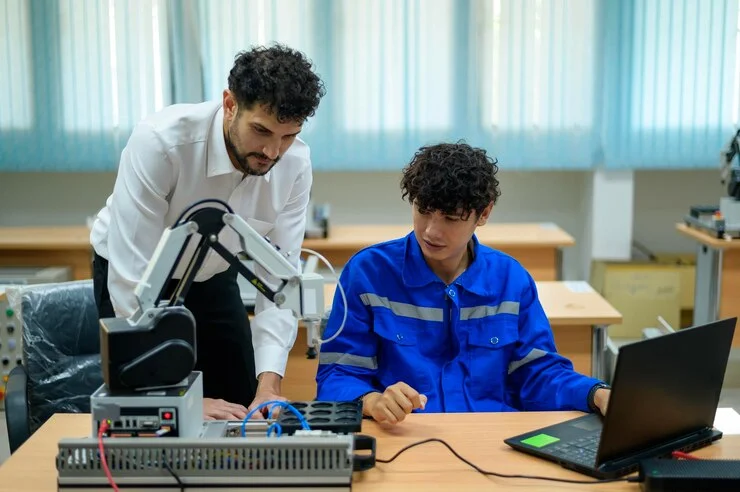The Asotecnicos del cesar valledupar, particularly its capital city Valledupar, has emerged as a focal point for various technical developments across multiple sectors. From education and technology to agriculture and industry, the advancements witnessed in this region are noteworthy. This blog post aims to delve into the technical aspects of CESAR Valledupar, exploring significant developments, educational institutions, technological initiatives, and the interplay of traditional and modern practices.
1. Historical Context Asotecnicos del cesar valledupar
To understand the current technical landscape of Asotecnicos del cesar valledupar, it’s important to consider the historical context. Valledupar, founded in 1550, has a rich cultural heritage heavily influenced by indigenous groups and Spanish colonization. The region’s strategic significance, given its location and resources, has made it a site of economic and technical evolution.
From the onset, Valledupar has been traditionally known for agriculture, particularly with crops like cassava, corn, and coffee. Over time, this agricultural base has paved the way for technical advancements in agronomy, mechanization, and sustainable practices.
2. Educational Institutions Driving Technical Growth
One of the key drivers of technical growth in Valledupar is its educational infrastructure. The city is home to several universities and technical institutes that equip students with essential skills and knowledge.
2.1 Universidad Popular del Cesar (UPC)
The Universidad Popular del Cesar stands out as a leading institution for higher education in the region, offering a range of programs focused on science, technology, and engineering. The university also emphasizes the importance of research and innovation, encouraging students to participate in projects that address local and national challenges.
2.2 SENA
The National Learning Service (SENA) is another crucial institution, providing vocational training and technical education tailored to labor market demands. With specialized courses in areas such as IT, agriculture, and manufacturing, SENA plays a pivotal role in shaping the workforce of Valledupar.
2.3 Technical High Schools
In addition to higher education institutions, various technical high schools in the region prepare students for careers in specialized fields. These schools focus on practical skills and hands-on training in areas like construction, mechanics, and information technology, ensuring that students are job-ready upon graduation.
3. Technological Initiatives and Innovation
As Valledupar continues to develop its technical capabilities, several initiatives and innovations are transforming various sectors.
3.1 Agricultural Technology
Agriculture remains a cornerstone of the Asotecnicos del cesar valledupar economy. Recent technological advancements have introduced precision agriculture techniques, which utilize data analytics, GPS, and IoT devices to optimize farming practices. Farmers in Valledupar are increasingly adopting these technologies, resulting in improved yields and resource efficiency.
3.2 Renewable Energy
The region is also making strides in renewable energy, particularly solar power. With abundant sunlight, Asotecnicos del cesar valledupar Valledupar is exploring solar energy projects that not only provide sustainable energy sources but also stimulate local economic development.
3.3 Digital Transformation
In the era of digitalization, many businesses in Valledupar are embracing technological transformations. This shift includes adopting e-commerce platforms, using digital marketing, and employing data analytics to enhance operational efficiency. As a result, local enterprises are increasingly competitive, not only in national markets but also in reaching international audiences.
4. Collaboration Between Sectors
A hallmark of the technical development in Asotecnicos del cesar valledupar is the collaboration among diverse sectors. Government, educational institutions, and private enterprises are working together to foster growth and innovation.
4.1 Public-Private Partnerships
Public-private partnerships (PPPs) are instrumental in financing and executing projects that enhance the region’s technical infrastructure. These collaborations facilitate the sharing of resources, expertise, and risks, resulting in more efficient outcomes.
4.2 Community Involvement
Community engagement plays a critical role in ensuring that technical advancements resonate with local needs. Initiatives involving local stakeholders create opportunities for grassroots innovations and solutions that address community-specific challenges.
5. Challenges and Future Directions
Despite the significant progress, CESAR Valledupar faces challenges in its technical development trajectory. Issues such as limited access to advanced technology, disparities in education quality, and the need for further investment in infrastructure can impede growth.
5.1 Bridging the Digital Divide
To continue progressing, it is essential to bridge the digital divide by improving access to technology and the internet. Ensuring that all residents, particularly those in rural areas, can access digital resources is critical for fostering inclusivity and growth.
5.2 Fostering a Culture of Innovation
Cultivating a culture of innovation and entrepreneurship is vital for the long-term sustainability of technical development in Valledupar. Encouraging local startups and supporting entrepreneurial initiatives can lead to job creation and economic resilience.
Conclusion
The technical landscape of Asotecnicos del cesar valledupar is vibrant and continually evolving, driven by a rich historical context and a commitment to education, innovation, and collaboration. As the region navigates challenges and embraces opportunities, its future appears promising, poised to become a hub of technical excellence in Colombia. Through sustained efforts from various sectors and a community engaged in its own development, Valledupar has the potential to be a model for other regions striving for similar advancements.
